 |
Eduardo Cardoso de Abreu
University of Campinas (IMECC – UNICAMP)
|
|
Title:
Lessons from flows through porous media for solving nonlinear hyperbolic problems
Abstract:
Hyperbolic problems and balance laws are relevant on the foundations of mathematical modeling and numerical simulation to the study of fluid dynamics in porous media. Such nonlinear models appear naturally in basic and applied sciences related to energy, climate, water, agriculture and they are also current events for a green world. We will discuss how fresh insights from flows through porous media on conservation properties, dimensional analysis and relaxation are key ingredients for construction of new effective schemes for solving hyperbolic transport models and a new desingularization analysis tool for construction of computationally stable numerical flux in locally conservative form. In fact, the approach is more general. We will also present advances in the mathematical modeling and design of a new class of positive Lagrangian-Eulerian schemes with rigorous numerical analysis for solving multidimensional hyperbolic-transport problems and related applications in geosciences.
Bio:
Eduardo Abreu (EA) is Associate Professor of Applied & Computational Mathematics at UNICAMP. He earned a BA (2001) Mathematics-Major, UERJ/Brazil. EA obtained MSc (2003) & PhD (2007) at UERJ, direction of Felipe Pereira, on the modeling/simulation of nonclassical waves for 3-phase flows in porous media (Best Thesis, Brazilian Society of Computational and Applied Mathematics & 1st Prize for innovative technologies, Petrobras/CNPq (Brazil NSF). His PostDoc as CNPq Young Investigator (2008) & Research training (2009-2011) were at IMPA-Institute for Pure and Applied Mathematics on applied topics for hyperbolic problems in fluid dynamics with mentor Dan Marchesin. EA is involved in supervision of PostDoc, PhD, MSc researchers. EA is the recipient CNPq Award PQ-1B 2020-2024, InterPore Rosette 2021. EA has acted as PI's within CNPq, FAPESP, Petrobras projects. EA is a member of the Red IberoAmericana Investigadores en Matemáticas Aplicadas a Datos. EA is Chair BR-Chapter & member of the Interpore National Chapters Committee. EA awarded the 2021 Zeferino Vaz Academic Recognition Award, excellence & academic achievements in the area of Applied Mathematics by Unicamp.
|
| |
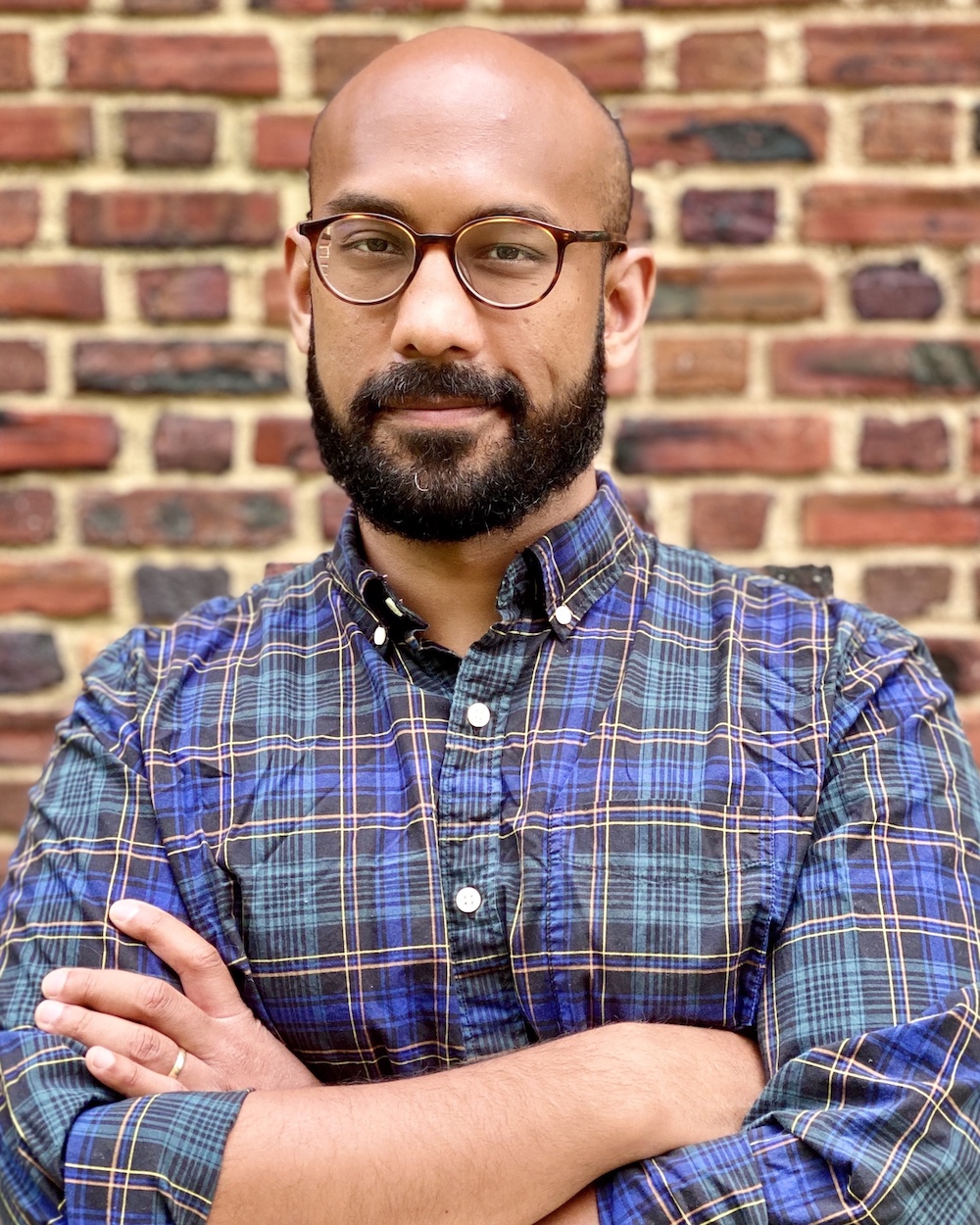 |
Sujit S. Datta
Princeton University
|
|
Title:
Life in a Tight Spot: How Bacteria Swim, Disperse, and Grow in Porous Media
Abstract:
Bacterial motility and growth play central roles in agriculture, the environment, and medicine. While bacterial behavior is typically studied in bulk liquid or on flat surfaces, many bacterial habitats -- e.g., soils, sediments, and biological gels/tissues -- are complex porous media. Here, using studies of E. coli in transparent 3D porous media, we demonstrate how confinement in a porous medium fundamentally alters bacterial behavior. In particular, we show how the paradigm of run-and-tumble motility is dramatically altered by pore-scale confinement, both for cells performing undirected motion and those performing chemotaxis, directed motion in response to a chemical stimulus. Our porous media also enable precisely structured multi-cellular communities to be 3D printed. Using this capability, we show how spatial variations in the ability of cells to perform chemotaxis enable populations to autonomously stabilize large-scale perturbations in their overall morphology. Finally, we show how when the pores are small enough to prevent cells from swimming through the pore space, expansion of a community via cellular growth and division gives rise to distinct, highly-complex, large-scale community morphologies. Together, our work thus reveals new principles to predict and control the behavior of bacteria, and active matter in general, in complex environments such as porous media.
Bio:
Sujit Datta is an Assistant Professor of Chemical and Biological Engineering at Princeton University. He earned a BA in Mathematics and Physics and an MS in Physics in 2008 from the University of Pennsylvania. He earned his PhD in Physics in 2013 from Harvard, where he studied fluid dynamics and instabilities in porous media and colloidal microcapsules with David Weitz. His postdoctoral training was in Chemical Engineering at Caltech, where he studied the biophysics of the gut with Rustem Ismagilov. He joined Princeton in 2017, where his lab studies soft and living materials in complex settings, motivated by challenges like water remediation, carbon sequestration, oil/gas recovery, and targeted drug delivery. Prof. Datta is the recipient of the NSF CAREER Award, AIChE 35 Under 35 Award, ACS Unilever Award, APS Andreas Acrivos Award in Fluid Dynamics, Pew Biomedical Scholar Award, APS LeRoy Apker Award, ACS Petroleum Research Fund New Investigator Award, and multiple Commendations for Outstanding Teaching.
|
| |
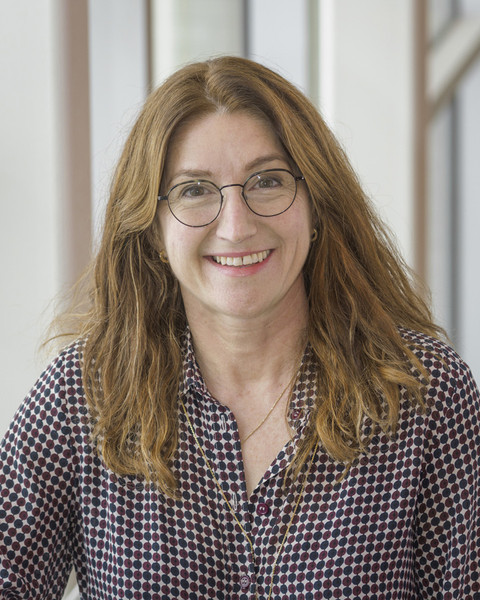 |
Dominique Derome
Université de Sherbrooke
|
|
Title:
Hysteresis of mass transport in porous media
Abstract:
A discussion on the occurrence of hysteresis in different aspects of mass transport in porous media, including contact angle of advancing and receding flow in capillaries, occurrence of capillary condensation hysteresis at mesopore scale and hysteretic swelling of hygroscopic polymers upon sorption. Relevance of considering hysteresis in computational modeling, namely lattice Boltzmann and atomistic modeling.
Bio:
Dominique Derome is professor at the Department of civil and building engineering, Université de Sherbrooke, Canada since 2019, and holds a Canada Research Chair tier 1 in Multi-scale Building Physics. She studies heat and mass transfer in the built environment, the related impacts on durability of materials and on thermal comfort of its inhabitants. Her research proposes innovative and multi-scale approaches of the highly coupled physical processes that occur in the built environment, intensively integrating advanced computational and experimental methods. This multidisciplinary research aims at developing solutions for a sustainable living environment, resilient in the face of climate change. Previously she was for 11 years senior scientist at the Swiss research institution Empa and 10 years professor at Concordia University, Montreal, Canada. She is the Editor-in-Chief of the Journal of Building Physics.
|
| |
 |
Zuleima T. Karpyn
Pennsylvania State University
|
|
Title:
Experimental Investigation of Conditions Favoring Enhanced Gas Storage in Shales
Abstract:
Shale gas reservoirs are currently viewed as an emergent opportunity to sustain growing energy needs while reducing the carbon intensity of energy systems relative to other fossil fuels. However, these reservoirs are geologically complex in their chemical composition and dominance of nano-scale porosity, resulting in limited predictability of their effective storage capacity. To predict gas storage and estimate volumetric gas-in-place, in-situ gas properties need to be defined. However, only a few direct experimental measurements on in-situ gas properties are available in the literature, and the interactions between gas and the surrounding surface area of the medium remain poorly understood. In this study, gas invasion experiments were conducted in conjunction with X-ray microCT imaging on three different shales, i.e., Bakken, Haynesville and Marcellus. Results show evidence of enhanced storage capacity in all cases, with different degrees of gas densification across the three shale specimens. The average of measured in-situ xenon density within the Bakken, Haynesville and Marcellus shale samples were found to be 171.53kg/m3, 326.05kg/m3 and 947kg/m3, respectively. These measured densities are higher than their corresponding theoretical free gas density, though lower than the xenon density at boiling point, indicating that current practices of estimating adsorbed gas and gas in place, using boiling point liquid density, may be overestimated. The xenon densification factor in the Marcellus sample was found to be 7.4, indicating the most significant degree of localized densification. This densification factor drops to 2.6, and to 1.4, in the Haynesville and the Bakken sample, respectively. Characterization of shale composition and pore structure are discussed, in order to assess the shale properties favoring enhanced gas storage. Statistical results indicate that compositional properties are weakly correlated with gas densification, while pore structure is a strong indicator of gas densification levels in shales. The findings in this work lay a foundation to evaluate enhanced storage capacity for various gases in ranging tight formations.
Bio:
Zuleima Karpyn is Associate Dean for Graduate Education and Research, and Donohue Family Professor in Energy and Mineral Engineering, College of Earth and Mineral Sciences, at the Pennsylvania State University. Dr. Karpyn specializes in multiphase flow and transport in porous media, and digital rock physics. Areas of application include reservoir characterization, carbon sequestration and environmental remediation. She holds a B.S. in chemical engineering from Universidad Central de Venezuela, and an M.S. and Ph.D. in petroleum and natural gas engineering from The Pennsylvania State University. Dr. Karpyn is a recipient of the 2008 Faculty Early Career Development (CAREER) Award granted by the U.S. National Science Foundation, the 2010 Wilson Award for Excellence in Teaching, 2016 Fulbright U.S. Scholar, and 2018-2019 Big10 (BTAA) Academic Leadership Fellow. She also served as Associate Editor of the Society of Petroleum Engineers Journal (2009-2014), Assistant Editor-in-chief of the Journal of Petroleum Science and Engineering (2014-2017), and Associate Editor of Transport in Porous Media (2018-present).
|
| |
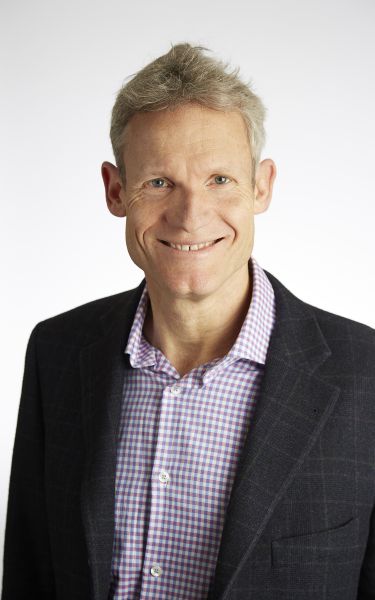 |
Stephan Matthai
The University of Melbourne
|
|
Title:
Modelling & Simulation of Multiphase Flow in Highly Heterogeneous Geologic Porous Media
Abstract:
Geologic heterogeneity presents itself in the form of nested accumulations of granular porous media, ranging from poorly indurated soils to brittle rocks. The depositional environment determines the association of sediment types, and the environmental processes shape, structure, and juxtapose different deposits. Desert dunes, for example, are hundred-metre-tall stacks of mm-thin sand sheets varying in grain size and composition. This layering is disrupted by slides, slumps, and other discontinuities. It is amplified by chemical interactions with infiltrating fluids, bonding grains together while selectively dissolving and-or precipitating mineral phases.
This presentation explores complex emergent behaviour that arises from the interplay of geoheterogeneity with multiphase flow. Sophisticated digital outcrop models resolving geologic features across multiple length scales are used to constrain digital twins of the real world, offering the unique opportunity to investigate system behaviour in response to engineering interventions and reveal side effects. Of particular interest are the performance analysis and optimisation of multiphase flow systems such as CO2 geo-sequestration complexes, geothermal reservoirs, and gas storage sites. These simulations can also constrain uncertainty aggravated by the sporadic nature of measurements and the limitations of the geophysical imaging of the subsurface.
The rich behavioural dynamics of geologic porous media saturated with brine and CO2 will be illustrated with results of hybrid FEM-FVM computations expressing jump discontinuities during simulation.
Bio:
Stephan Matthai is a Professor in the Department of Infrastructure Engineering at Melbourne University and reservoir engineer in the Peter Cook Centre for CCS research and ANLEC R&D, Australia. Until 2015, he directed the Institute of Reservoir Engineering at the Montanuniversitaet Leoben (MUL), Austria, and, from 2001 to 2009, was a Governors’ Lecturer at Imperial College London, where he ran an industry consortium on multiphase flow in naturally fractured reservoirs. In 2005, he became UK’s delegate on IEA’s working group on EOR. In 1994, as a postdoc at Stanford University, he invented the Complex Systems Modelling Platform (CSMP++), an application-programmer interface now jointly developed by researchers at Imperial, HWU, ETHZ, ENSG, UOM, and the DTU. CSMP++ underpins novel software tools like the Australian Carbon Geo-Sequestration Simulator (ACGSS) and ETHZ’s simulator for high-enthalpy geothermal systems as well as >250 publications in ISI ranked journals, including 2 articles in Science.
|
| |
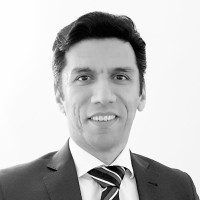 |
Vahid Niasar
The University of Manchester
|
|
Title:
Advances in pore-scale characterisation of multiphase flow and transport in porous materials
Abstract:
Understanding fundamentals of flow and transport in porous media has been significantly enhanced using pore-scale characterisation methods, such as pore-scale modelling and imaging. During the last five decades “pore-scale characterisation” has been established as a major field of porous media research, has imposed new questions and highlighted gaps in knowledge that has enhanced our understanding for practical implications.
In this presentation, I present some key pore-scale findings related to solute transport in saturated and unsaturated porous media. The experimental results have been obtained using three different complementary approaches : (a) optical imaging of quasi-3D micromodels, (b) 4D X-ray microCT imaging glass-bead and sand packing, (c) GPU-enhanced pore-network models.
Two main aspects of the results will be discussed in this presentation (i) the non-Fickian behaviour of transport in unsaturated porous media and the critical role of saturation morphology (ii) time scale of transport during loading and unloading of a solute and the potential role of non-linear transport.
Bio:
Dr Vahid Niasar is a Reader at the Department of Chemical Engineering and Analytical Science at the University of Manchester and also director of the Subsurface Energy Engineering Masters Programme. Prior to joining the University of Manchester in 2014, he was a research reservoir engineer at Shell.
His research portfolio covers computational and experimental techniques for investigation of multi-phase flow, reactive transport, non-Newtonian fluid flow and transport, and electrochemistry in porous materials. His research group, Integrated Multiscale Porous Media Research, is active in developing GPU-based pore-scale simulators for various porous-media related applications in subsurface industry (e.g. enhanced oil recovery, carbon and hydrogen geological storge, geothermal energy recovery) and chemical engineering (e.g. fuel cells and batteries). He is also serving as the Chair of InterPore Council since 2019.
|
| |
 |
Evangelos Tsotsas
Otto-von-Guericke-Universität
|
|
Title:
Discrete models, continuum models and scale transitions for the drying of porous media
Abstract:
Continuum models similar to those used for diffusion, heat conduction or viscous flow are since long available for drying processes, so one might think that tabulating respective transport coefficients for various materials should be the main research task left to be fulfilled. However, the opposite is true, because expansion and, especially, deepening of the research on the drying of porous media in the last years has unveiled, how severely restricted common continuum models for drying in reality are. This has mainly been achieved by using pore network simulations as in silico experiments of much superior resolution and accuracy than real experiments can provide to derive continuum model parameters. Tremendous variability, missing uniqueness of such parameters at local scale, and the necessity of corrections by so-called non-local-equilibrium functions are some of the deficiencies diagnosed. They can explain the notorious hardship in identifying the transport parameters of drying porous media, but can also result in serious misunderstanding of the physics behind the drying process. On the other hand, discrete, pore-resolving models are not just the starting point of coarsening, but they can also be used on their own to better understand, which structural features of porous media correlate with their drying behavior, how, and why. Pointing in the direction of reverse engineering towards materials with superior properties, such aspects indicate how ample the potential of research on drying porous media still is.
|
|
Bio:
Evangelos Tsotsas holds the Chair of Thermal Process Engineering at Otto von Guericke University Magdeburg (Germany) since 1994. He has a PhD (1985) and a habilitation (1990) from Karlsruhe Institute of Technology, and was Senior Process Specialist at the Dow Chemical Company from 1991 to 1994. With a group of currently around 25 PhD and postdoc researchers and more than 500 papers in refereed journals and proceedings, the main focus of his work is on porous and granular media, drying, and particle formulation (spray fluidized bed agglomeration, granulation and coating). The group has extensive experimental facilities in these fields, including particle characterization, 3D imaging and process monitoring. Novel discrete models (pore network models for wetting and drying, Monte-Carlo methods for particulate processes, thermal DEM, combinations of DEM with CFD and volume of fluid), but also continuous approaches (such as population balances) belong to the research portfolio of the group.
|
| |
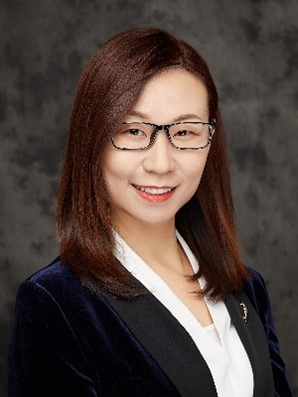 |
Ruina Xu
Tsinghua University
|
|
Title:
Supercritical CO2 flow and heat/mass transfer in micro/nano-porous structures in CO2 geological utilization and storage
Abstract:
CO2 geological storage and its use to enhance geothermal systems and shale oil/gas recovery are critical technologies for addressing climate change. CO2 is in a supercritical condition among the above methods. One of the most important challenges in improving recovery efficiency and long-term storage safety is the migration and heat/mass transfer of supercritical fluids in reservoir porous structures. Under the subsurface conditions, micro/nano-scale confinement, interface effect, and rapid changes in supercritical-fluid physical properties all have a significant influence on transport behavior in the porous structure. This talk will be divided into three parts: (1) heat transfer characteristics of supercritical CO2 in rocks; (2) CO2/CH4 adsorption in kerogen nano pores; (3) supercritical CO2, water, and oil multiphase flow in micro-porous structures.
Bio:
Ruina Xu is a Professor (tenured) of the Department of Energy and Power Engineering at Tsinghua University and Deputy Director of the Key Laboratory for CO2 Utilization and Reduction Technology of Beijing. She obtained a B.S. in 2002 and PhD in 2007 from Tsinghua University. Her research aims at providing answers to fundamental questions on the dynamics of multiphase flow, heat and mass transfer in micro-/nano-scale and complex porous network, which are applicable to practical low carbon and carbon neutral solutions, for example CCUS, CO2 enhanced unconventional gas/oil exploitation, and next generation of solar-thermal and geothermal systems. In-situ high pressure visualization experiments and numerical models from atom-, molecular-, pore-, core-scale to field scale are developed in her lab. In addition to providing test platforms for CCS projects in UK, Canada and France, her team is the key technical supporter for the CCS demonstration projects in China. She has been the (co-) author of over 70 journal papers and has 30 authorized invention patents.
|

















